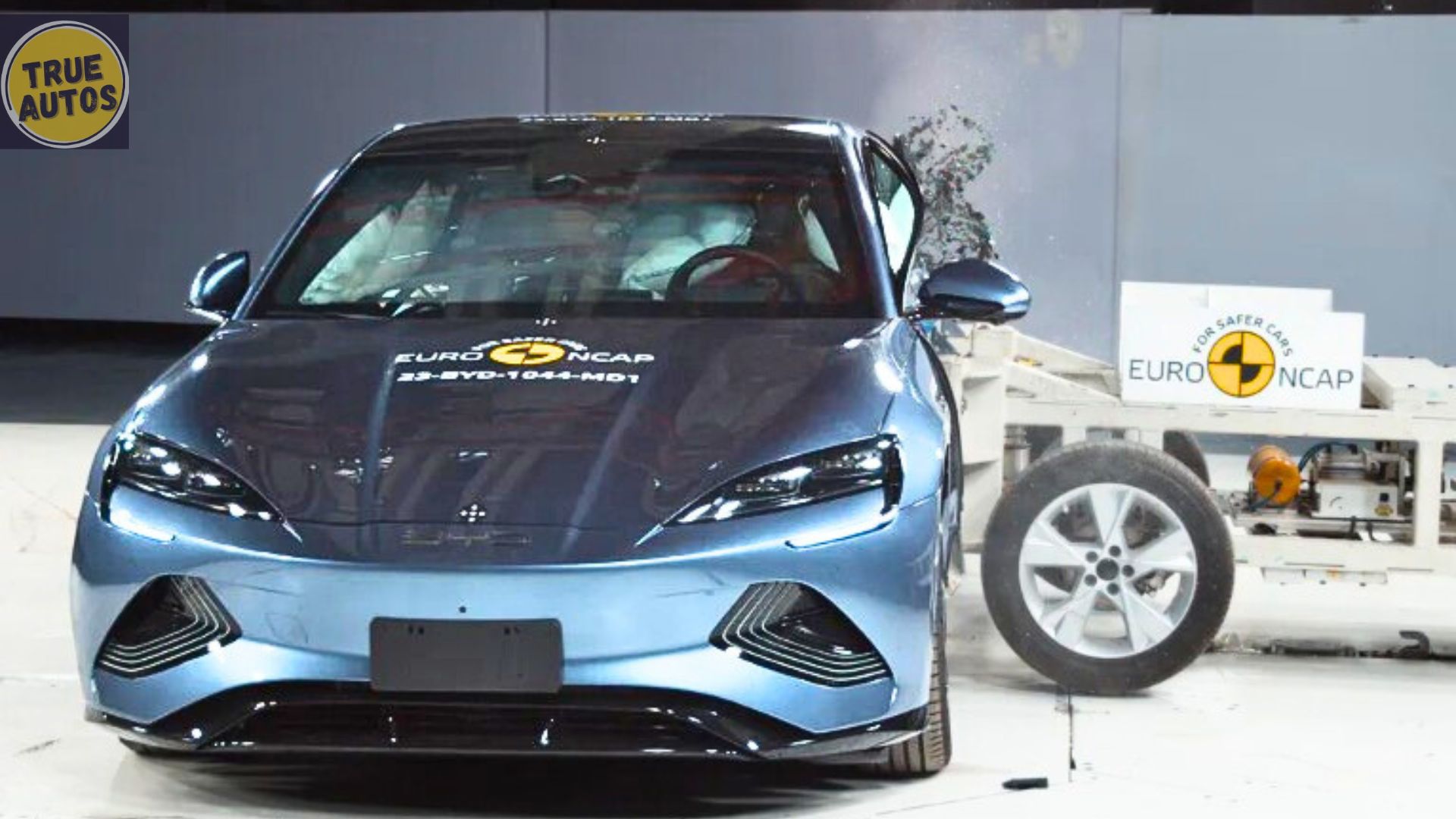Byd Seal Scores 5-star in Euro NCAP prior to launch
In October 2023, the BYD SEAL made its debut in Australia and New Zealand, marking a significant stride in automotive safety and technology. This introduction was accompanied by an ANCAP safety rating applicable to all variants of the vehicle, reaffirming its commitment to passenger safety and protection.
The BYD SEAL comes equipped with an array of standard safety features, including dual frontal, side chest-protecting, and side head-protecting airbags. Notably, a center airbag adds an extra layer of protection for front seat occupants in side impact crashes, contributing to enhanced safety measures onboard. Additionally, the vehicle boasts autonomous emergency braking capabilities, covering various scenarios such as Car-to-Car, Vulnerable Road User, Junction & Crossing, Backover, and Head-On collisions. Complementing this system is a comprehensive lane support system with lane keep assist (LKA), lane departure warning (LDW), and emergency lane keeping (ELK), ensuring optimal vehicle control and accident prevention.
In terms of structural integrity, the BYD SEAL exhibits commendable performance, maintaining stability in frontal offset tests while providing adequate protection for critical body regions. The inclusion of a center airbag further enhances occupant safety, particularly in side impacts, where it delivers good head protection for front seat occupants. Moreover, the vehicle demonstrates adequate prevention of excursion in far-side impact tests, underscoring its commitment to passenger well-being in various collision scenarios.
The BYD SEAL’s dedication to safety extends beyond its occupants to include first responders, with the provision of a Rescue Sheet offering crucial information in the event of a crash. Additionally, a multi-collision braking system ensures effective accident mitigation, further bolstering the vehicle’s safety credentials. Even in adverse conditions such as water submersion, the doors of the BYD SEAL remain functional for the required duration, facilitating timely rescue operations.

Child safety is another priority for the BYD SEAL, with lower ISOFix anchorages and top tether anchorages provided for all rear seating positions. However, the child presence detection system, while standard, fell short of meeting ANCAP’s requirements, highlighting the need for continuous improvement in safety technology.
Furthermore, the vehicle demonstrates a proactive approach towards pedestrian and cyclist safety, with autonomous emergency braking systems capable of detecting and reacting to vulnerable road users. While performance in most scenarios is good, marginal performance was noted in reverse (AEB Backover) scenarios, indicating areas for refinement.
The BYD SEAL’s advanced safety features extend to its driving assistance systems, including lane keep assist, blind spot monitoring, and intelligent adaptive cruise control. These systems work in tandem to enhance driver awareness and mitigate the risk of accidents, contributing to a safer driving experience overall.
In conclusion, the BYD SEAL represents a significant advancement in automotive safety technology, with its comprehensive suite of safety features and robust structural design setting a new standard for passenger protection. As the automotive industry continues to evolve, vehicles like the BYD SEAL play a pivotal role in ensuring the safety and well-being of drivers, passengers, and pedestrians alike. Through continuous innovation and refinement, the BYD SEAL remains at the forefront of safety excellence, embodying a commitment to safer roads and a brighter automotive future.

